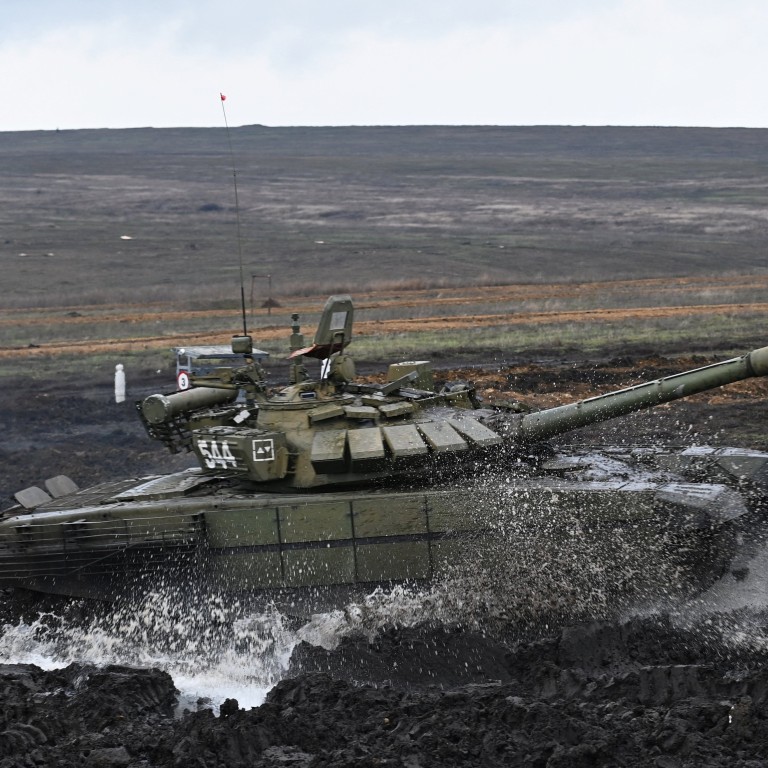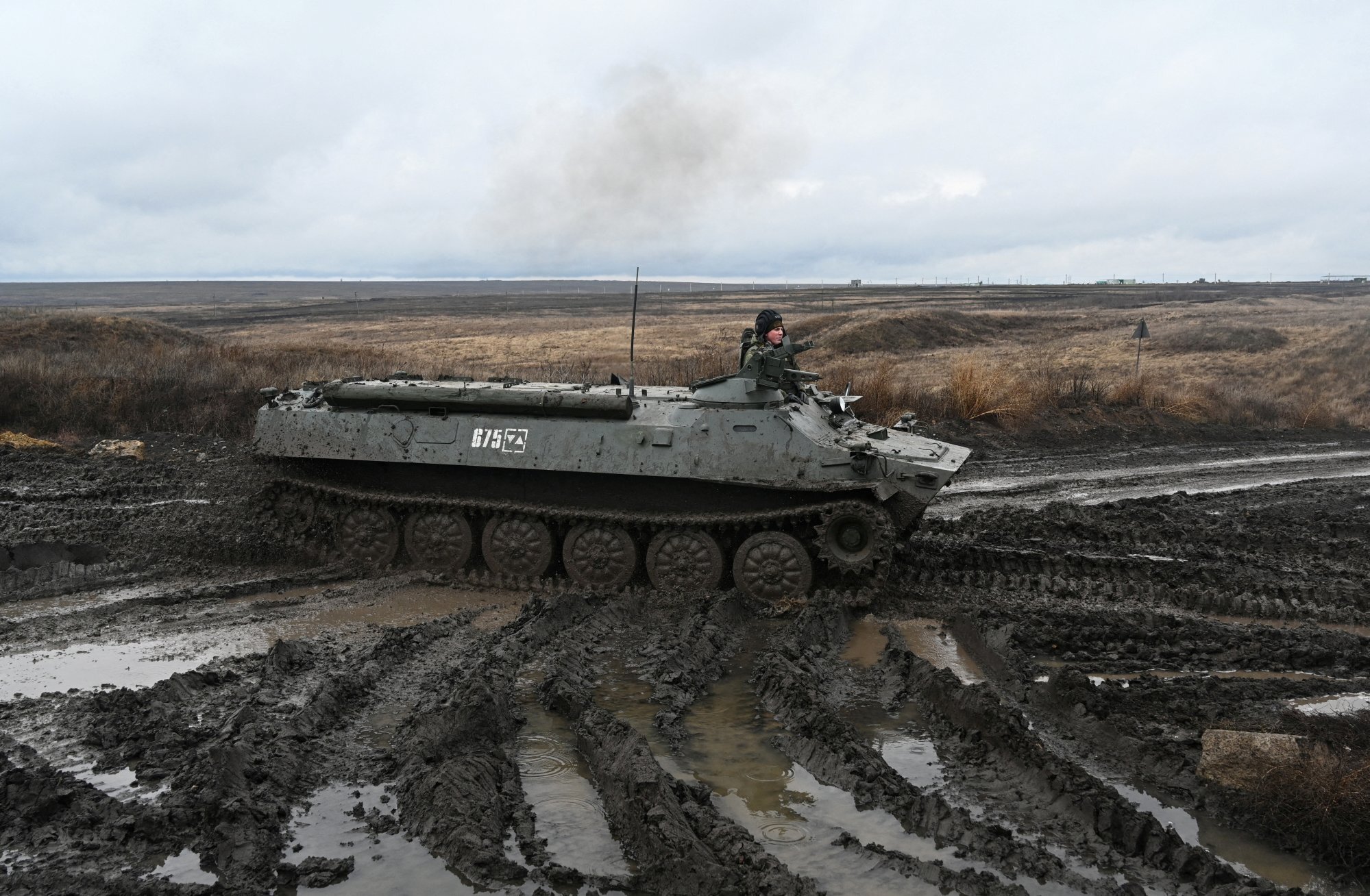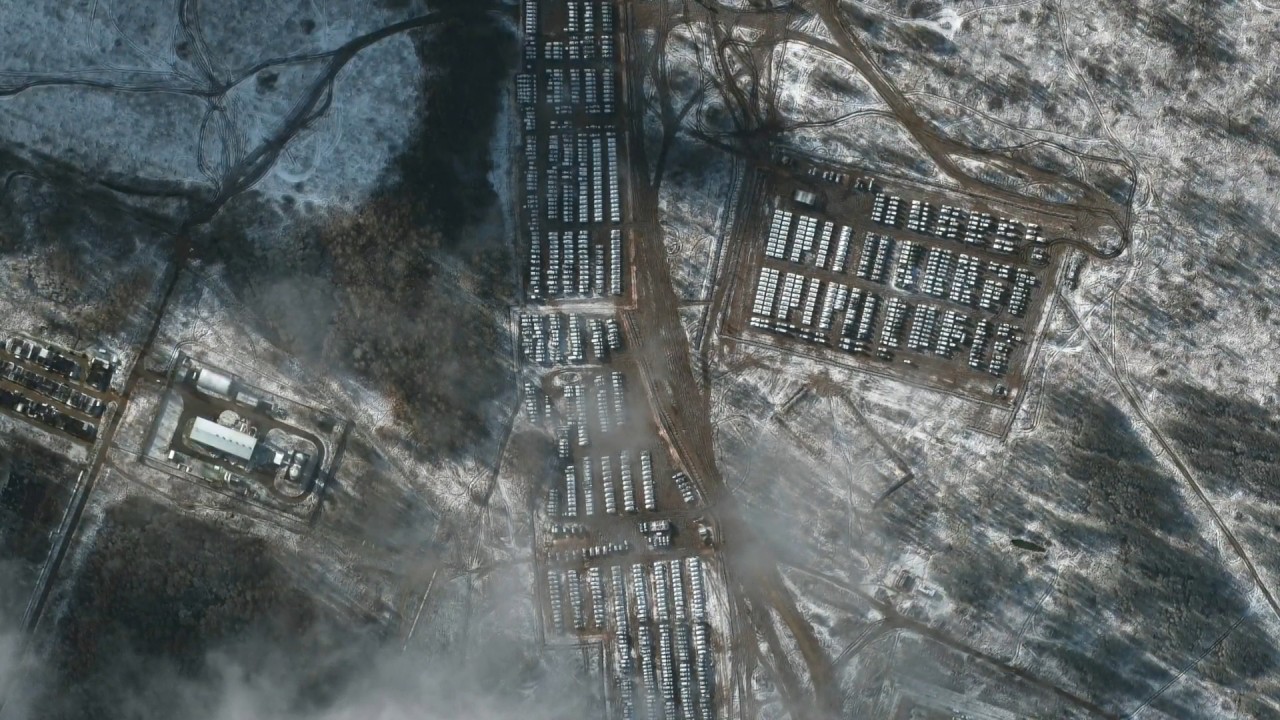
Mud could complicate possible Russian plans for an invasion of Ukraine, US officials say
- A Russian invasion of Ukraine could be complicated by a mild winter and mud, US officials said
- Experts say mud is a challenge but not necessarily an insurmountable obstacle for the Russian military
A mild winter and muddy ground could complicate possible Russian plans to launch an invasion of Ukraine, potentially delaying plans for military action, senior Biden administration officials told The New York Times.
Ukraine tends to experience a hard winter freeze by January at the latest, but this year, the ground has yet to freeze in various parts of the country due to mild winter weather.
Frozen ground, which is neither ice nor mud, allows troops, as well as heavy military vehicles and equipment, to manoeuvre more easily. Mud, however, can cause heavy wheeled vehicles to loose traction, and even tracked vehicles like tanks can be affected if the mud goes deep enough.
They added that he would likely need to act before the spring thaw in March, when the Russian military could face another muddy situation.

The Biden administration reportedly has meteorologists monitoring the weather in Ukraine and assessing whether they are suitable for a major military offensive against Ukraine.
Experts say that while weather are a factor in military planning, it is not the only factor to consider.
Russia holds tank drills near Ukraine, putting on pressure as talks ‘drag’
Jeffrey Edmonds, a former US Army tanker and CIA military analyst, told Business Insider that “muddy terrain and things of that nature can complicate operations, but in no way is it an obstacle”.
“It’s a complicating factor but not one that stops the operation from moving forward,” he said.
“It can slow operations. It can make logistics more complicated, but these are the things [Russia] trains for,” Edmonds, a Russia expert with CNA, explained, adding that “they really work very diligently at integrating their engineering assets into their mobility plans.”
“It’s those types of things that can slow operations somewhat,” he said. “It might delay operations, but again, they’re not insurmountable obstacles.” Edmonds said that if Russia intends to invade, mud probably won’t stop it because the Russian military is familiar with what it takes to fight in this kind of environment.
Nato warns Russia of ‘severe costs’ if Ukraine attacked
Russia has an estimated 85,000 to 100,000 troops amassed at various positions along the border with Ukraine. US intelligence previously indicated that Russia had plans to gather as many as 175,000 troops for a potential invasion as soon as “early 2022.”
The New York Times reported that Russian troop movements to the border area have slowed, with no significant changes to troop levels in recent weeks. Attack aircraft, namely helicopters, have been moved into the area though.
During talks between the US and Russia in Geneva this week, Russian officials insisted that the country has no plans to invade its neighbour. The US side said that if Russia wants to prove it has no hostile plans for Ukraine, it should “return the troops to barracks or tell us what exercises are ongoing and what their purpose is”.
Russia vs Ukraine: scenarios in a possible shooting war
As Russian forces create unease near Ukraine, Moscow has repeatedly made demands for security concessions from the US and Nato, such as barring Ukraine from joining Nato and limiting Nato’s eastward expansion. The US and Nato have rejected Russia’s requests.
After the meeting Monday, a senior State Department official said “we will see whether in fact Russia understands that the best way to pursue diplomacy is for them to reduce those tensions and to de-escalate”.


